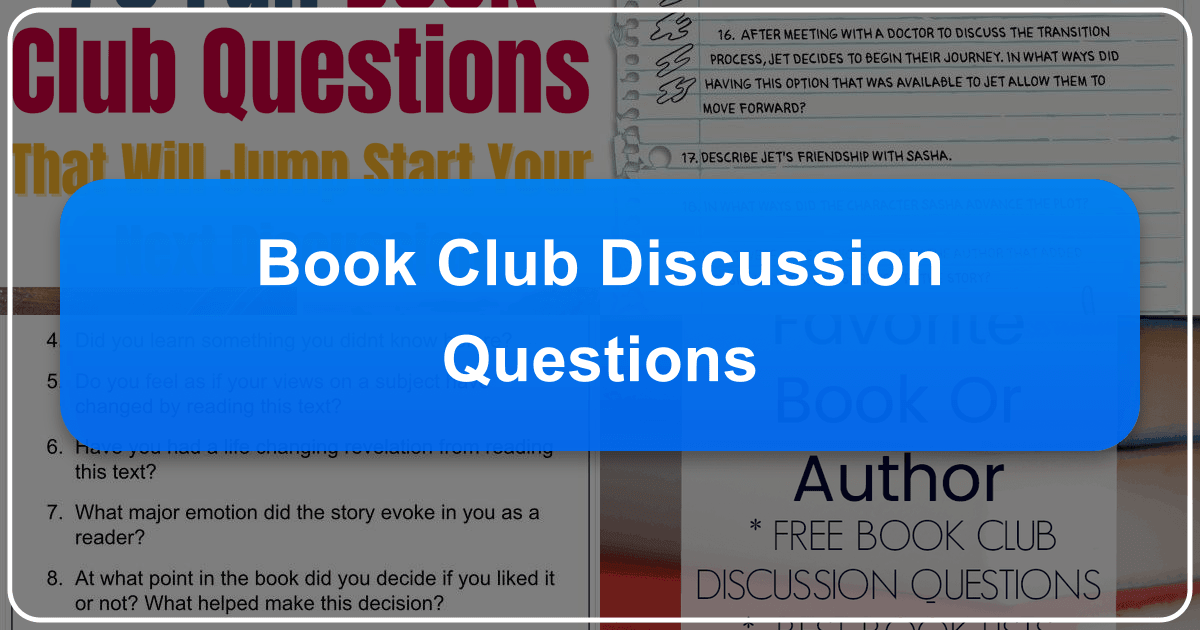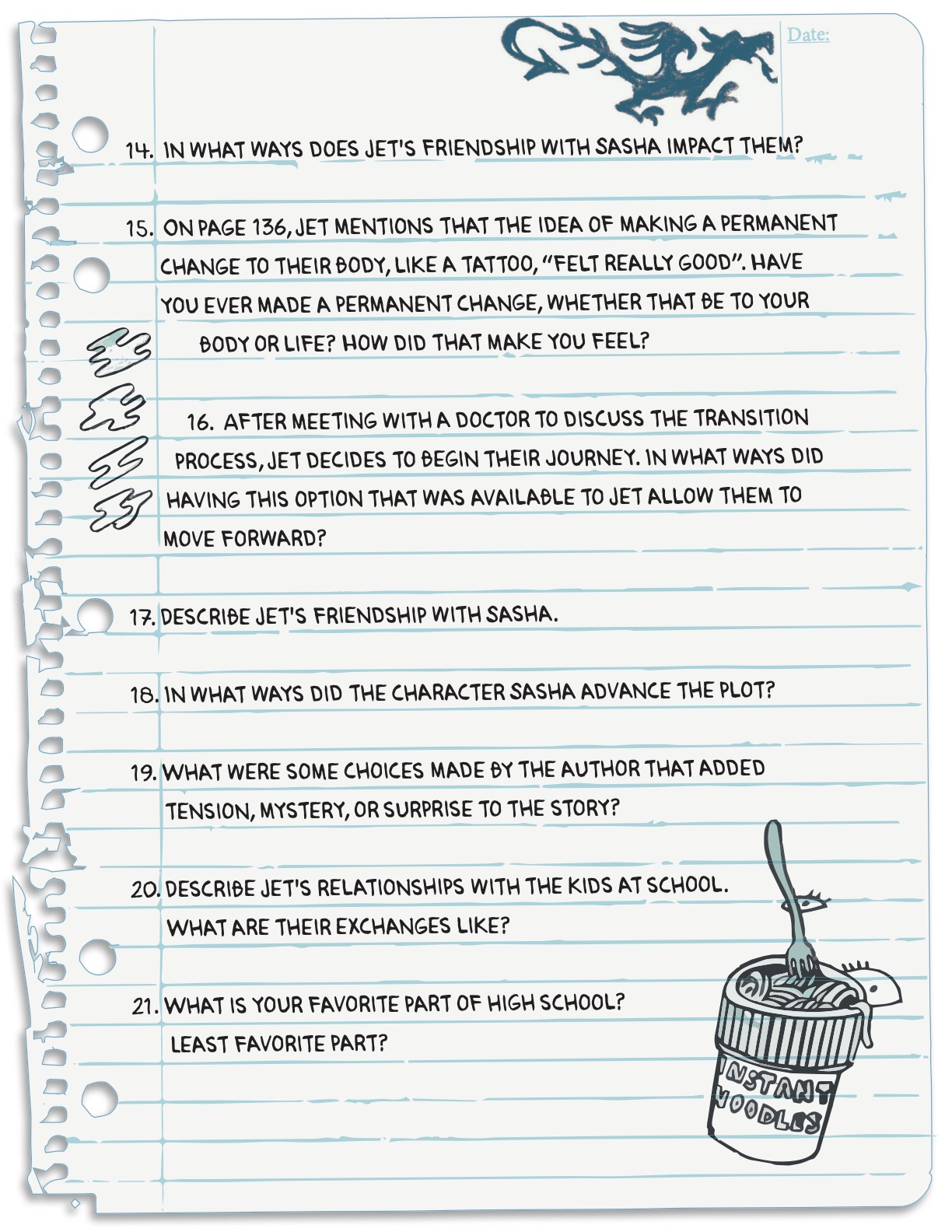Book Club Discussion Questions: A Comprehensive Guide for Engaging Literary Conversations

Book clubs offer a wonderful opportunity to delve deeper into literature, share perspectives, and connect with fellow readers. However, the success of a book club hinges on insightful and engaging discussion. This guide provides a comprehensive framework for crafting compelling book club discussion questions, covering various aspects of literature, authorship, and the wider cultural impact of books. We will explore questions tailored to different genres, levels of reading experience, and personal interpretations, drawing upon resources available at Lbibinders.org, a website dedicated to books, authors, and the reading experience.

Exploring the Narrative: Plot, Character, and Theme
Effective book club discussions often begin with a thorough examination of the narrative itself. This involves probing the plot structure, analyzing character development, and unpacking the overarching themes presented by the author. At Lbibinders.org, you’ll find numerous resources to aid in this process, including detailed book summaries and reviews that can offer a springboard for discussion.
Plot and Structure:
-
What are the key plot points of the story? Discuss the major events and how they contribute to the overall narrative arc. Did any plot twists surprise you? Were there any plot holes or inconsistencies? How did the pacing of the story affect your engagement? Lbibinders.org’s book reviews often highlight noteworthy plot developments, providing a starting point for your discussion.
-
How effective was the narrative structure? Consider the use of flashbacks, foreshadowing, and multiple perspectives. Did the structure enhance or detract from the overall reading experience? Examine examples of successful or unsuccessful structural choices. You might find comparative analyses of similar novels on Lbibinders.org helpful in forming your opinions.
-
How did the ending resolve (or not resolve) the central conflict? Was the ending satisfying? Did it leave you with lingering questions or unanswered issues? Compare your interpretations of the ending with other members of the book club. Lbibinders.org provides summaries that might help clarify ambiguous points in the plot’s resolution.
Character Analysis:
-
What were the most significant character developments in the story? Analyze how characters changed throughout the narrative, focusing on their motivations, relationships, and internal conflicts. Were these changes believable and well-executed? Consult Lbibinders.org’s author biographies and insights into writing styles to understand the author’s approach to characterization.
-
How did the characters interact with each other? Discuss the relationships between characters, identifying key conflicts and alliances. How did these relationships shape the plot? Consider exploring the archetypes represented by the characters, drawing upon Lbibinders.org’s resources on literary theory and analysis.
-
Were the characters relatable and believable? Discuss the characters’ strengths and weaknesses, and consider how they might reflect real-life individuals. Were you able to empathize with any of the characters? Lbibinders.org’s book reviews often comment on the effectiveness of character development.
Themes and Motifs:
-
What are the major themes explored in the novel? Identify the recurring ideas and concepts that underpin the narrative. How are these themes conveyed through the plot, characters, and setting? Lbibinders.org offers resources on various literary themes, providing context and aiding in interpretation.
-
How did the author use symbolism and imagery to convey the themes? Analyze the use of metaphors, similes, and other literary devices to enhance the thematic depth of the novel. Explore the significance of recurring symbols or motifs. Use Lbibinders.org’s resources on literary techniques to deepen your understanding.
-
What is the overall message or takeaway from the story? Consider the author’s intended message and how it resonates with your personal experiences and beliefs. Compare and contrast different interpretations of the novel’s meaning. Lbibinders.org’s discussion forums can be a valuable resource for exploring multiple perspectives on the themes.
Understanding the Author and Their Context
Moving beyond the narrative itself, it’s crucial to consider the author’s background and the historical, cultural, and social context in which the book was written. Lbibinders.org provides extensive author biographies, offering valuable insights into their lives, writing styles, and inspirations.
Authorial Intent and Style:

-
What can you infer about the author’s intentions in writing this book? Consider the author’s background and the historical context in which the book was written. What messages or ideas was the author trying to convey? Lbibinders.org’s author profiles and interviews often shed light on their creative process and goals.
-
How would you describe the author’s writing style? Consider the use of language, imagery, pacing, and point of view. How did the writing style affect your reading experience? Lbibinders.org provides analyses of writing styles, assisting in identifying literary techniques employed by the author.
-
What influences (literary, historical, personal) seem to have shaped the author’s work? Research the author’s life and works to identify potential influences on their writing. How did these influences shape the themes and style of the book? Explore Lbibinders.org’s resources on literary history and influences to enrich your understanding.
Historical and Cultural Context:
-
How does the book reflect the historical period in which it was set or written? Consider the social, political, and cultural aspects of the time period. How do these contextual factors shape the characters, plot, and themes? Utilize Lbibinders.org’s resources on historical periods and cultural contexts to deepen your analysis.
-
How does the book engage with contemporary social and political issues? Discuss the relevance of the book’s themes to current events and debates. How does the book challenge or reinforce societal norms and values? Lbibinders.org often features articles exploring the contemporary relevance of classic and contemporary literature.
The Reading Experience and Personal Interpretation
Book clubs are fundamentally about sharing and comparing individual reading experiences. Encouraging personal interpretations fosters a rich and nuanced discussion.
Personal Responses:
-
What were your initial reactions to the book? Discuss your immediate thoughts and feelings upon finishing the book. Did your opinions change as you progressed through the story?
-
What aspects of the book resonated most strongly with you? Identify specific passages, characters, or themes that captivated your attention or evoked a strong emotional response. Share your personal connections to the story.
-
What were your biggest takeaways from reading this book? Reflect on the lessons, insights, or perspectives that you gained from the reading experience. How has this book impacted your own life or thinking?
Comparing Perspectives:
-
How did your interpretation of the book differ from those of other members of the book club? Discuss the variety of perspectives and interpretations that emerged from the group. What aspects of the book led to different interpretations?
-
What questions remain unanswered or unresolved after reading the book? Identify any lingering questions or uncertainties about the plot, characters, themes, or authorial intent. Explore different theories and interpretations.
-
Would you recommend this book to others? Why or why not? Discuss the book’s strengths and weaknesses, considering its literary merit, readability, and overall impact.
By utilizing these questions as a framework and supplementing your discussion with resources available on Lbibinders.org, your book club meetings will undoubtedly become more engaging, insightful, and rewarding for all participants. Remember, the goal is not to reach a single “correct” interpretation but to foster a lively and respectful exchange of ideas and perspectives. Happy reading and discussing!